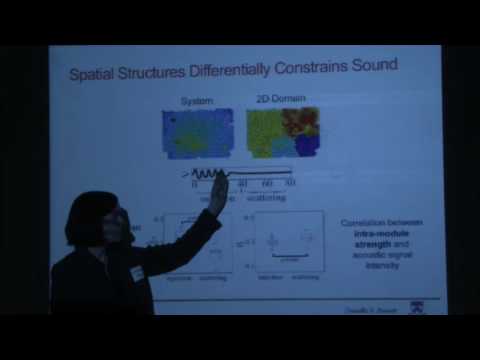Characterizing force-chain network architecture in granular materials
Presenter
April 18, 2015
Abstract
Force chains form heterogeneous physical structures that can constrain the mechanical stability and acoustic transmission of granular media. However, despite their relevance for predicting bulk properties of materials, there is no agreement on a quantitative description of force chains. Consequently, it is difficult to compare the force-chain structures in different materials or experimental conditions and to quantify their impact on materials properties. To address this challenge, we treat granular materials as spatially-embedded networks in which the nodes (particles) are connected by weighted edges that represent contact forces. We use techniques from community detection, which is a type of clustering, to find groups of closely connected particles. By using a geographical null model that is constrained by the particles' contact network, we extract chain-like structures that are reminiscent of force chains. We use graph-based statistics to quantify the network architecture of these chain-liked structures, and we use persistent homology of the clique complexes of these structures to quantify their topology. These tools provide statistical descriptors that differentially measure spatial and topological properties, and their combination, in force-chain objects. We demonstrate the utility of these diagnostics for identifying and characterizing classes of force-chain network architectures in various materials. To illustrate our methods, we describe how force-chain architecture depends on pressure for both laboratory experiments and numerically-generated frictionless packings. By resolving individual force chains, we quantify statistical properties of force-chain shape, which are potentially crucial diagnostics of bulk properties (including material stability). These methods facilitate quantitative comparisons between different particulate systems, regardless of whether they are measured experimentally or numerically.
